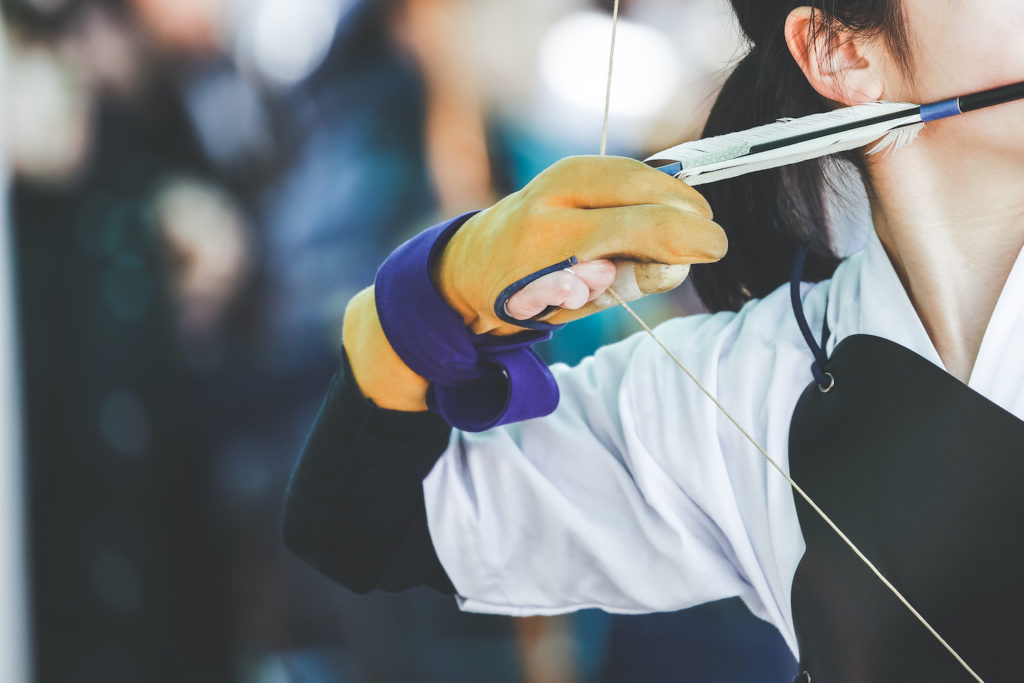
Kyudo is Japanese Archery which is called “The Way of the Bow”. Among other martial arts, it possesses its unique characteristics in its sense of beauty. It is not a sport, but an art. We could say it’s more like a meditation in a sophisticated way. Let’s take a look at what Kyudo really is about!
The Brief History of Kyudo
The roots of Kyudo lie in ancient Shinto tradition, which has ritualized the bows and arrows for over 2000 years. It has been experienced many transitions on its value and the way along with history.
Shinto: Introduction of “Way of the Kami”
Around the 4th and the 5th century after Emperor Ohjin’s reign, diplomatic relations between China and Japan started and its influence expanded in many areas including Kyudo.
It was at this time that ceremonial archery became an important part of the court system.
The original Japanese thought of Itoku (dignity and virtue), met with the Chinese thought of Rei (courtesy) lead to form the Sharei (ceremonial shooting) in the Imperial court.
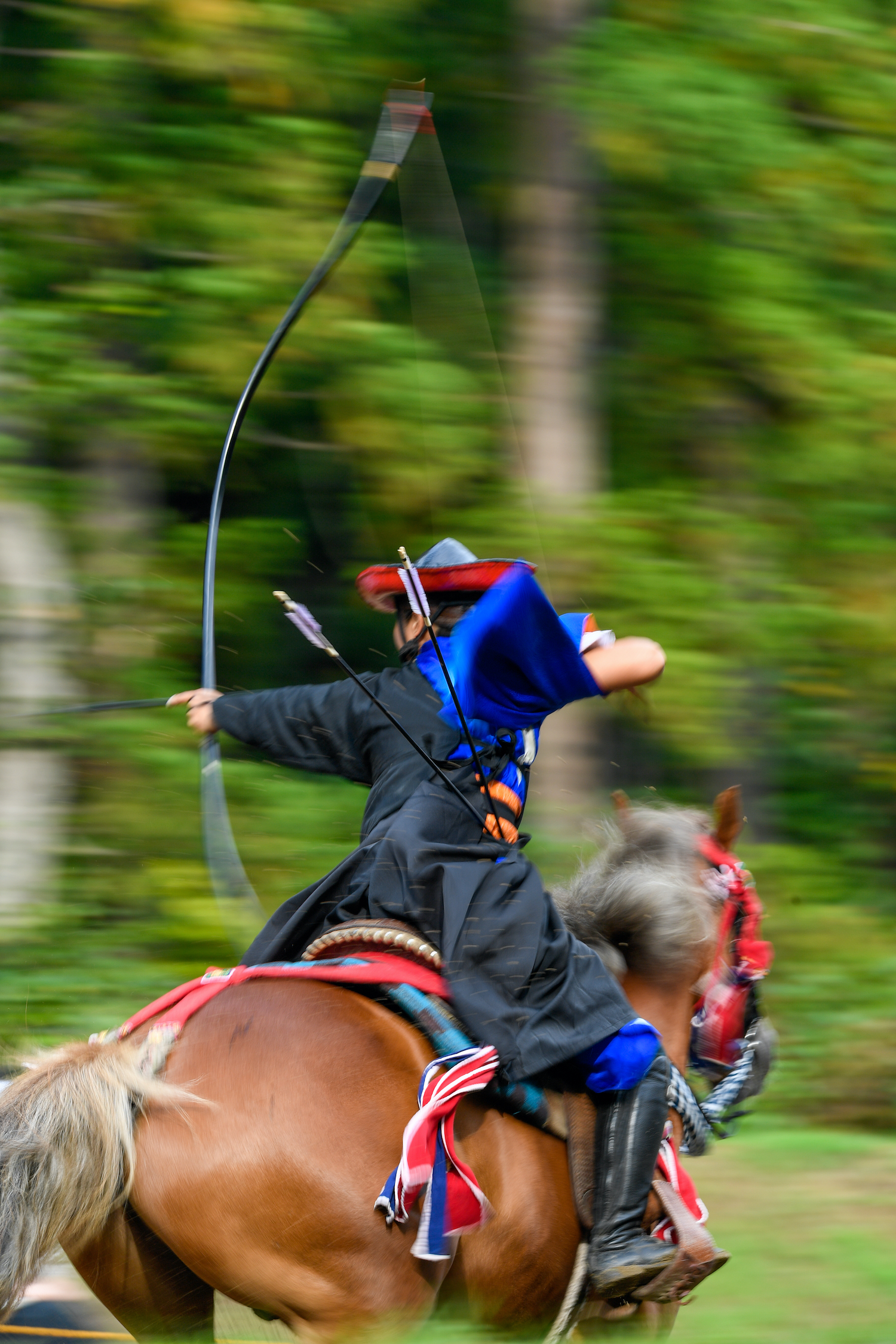
In the Kamakura period (1185-1333), Japanese bows and arrows had a close relationship with a horse as a combat technology training for Bushi, and established its moral under the reign of Shogun, Minamoto no Yoritomo.
Bushido: Samurai Code of Conduct
He put great importance on Kyudo to cultivate the Samurai ethic that they must to devote himself to reaching a spiritual height by mastering the art of horseback archery.
At this time around, Yabusame (horseback archery) began to be performed as a part of the Hojoe ritual (ceremony of releasing captive animals) at Tsurugaoka-Hachimangu Shrine up to this day.
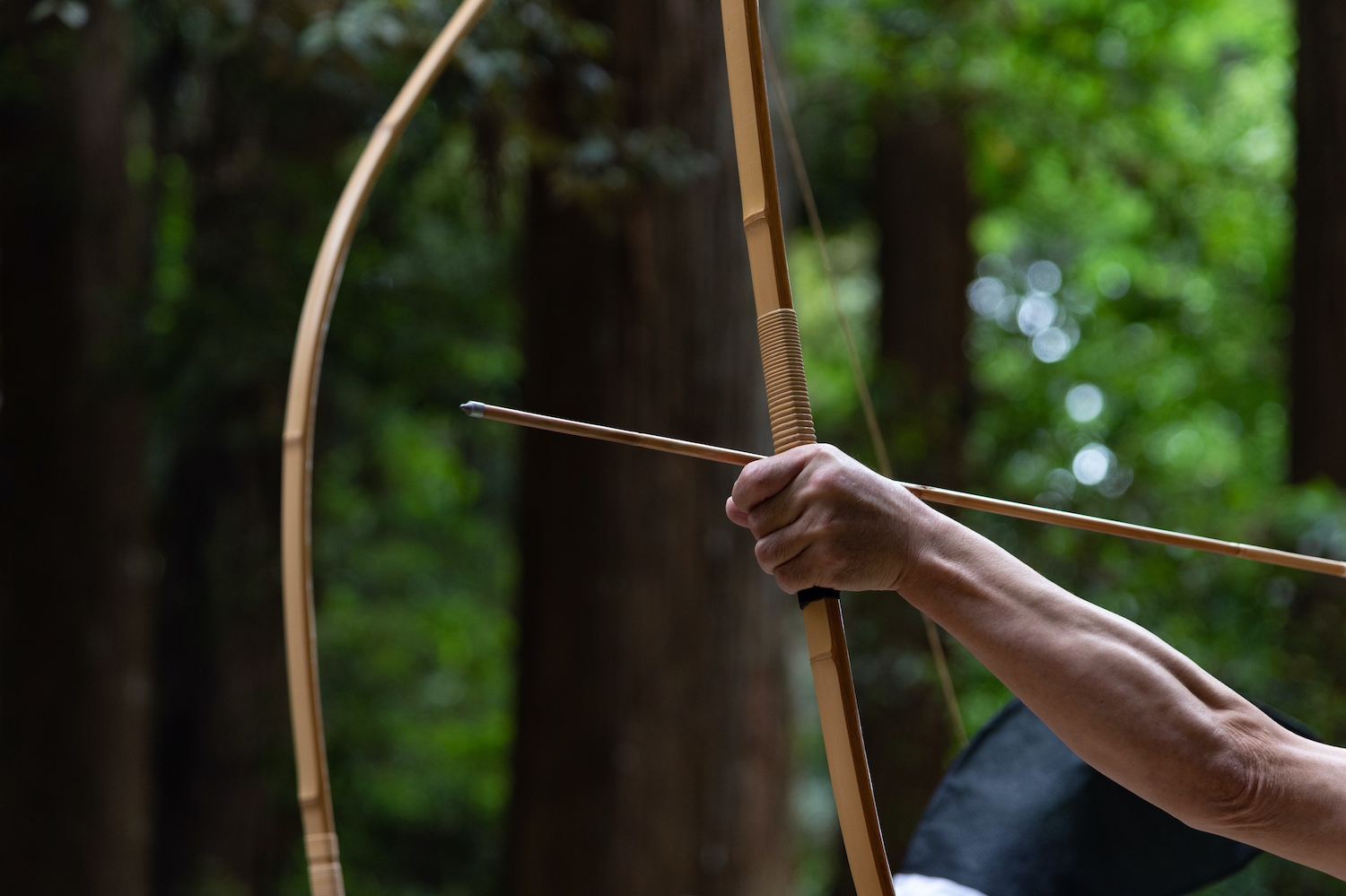
The importance of bows and arrows began to decline in Japanese warfare due to the introducing of matchlock rifles by Portuguese in 1543.
It was the decisive moment when Nobunaga Oda won the Battle of Nagashino commanding conscripts armed with muskets to Takeda’s army which was renowned for its cavalry in 1575.
Japanese bows and arrows increasingly took on a ceremonial role since then, leading ultimately to the highly ritualized form of archery that is kyudo.
It since developed as a way of personal development.
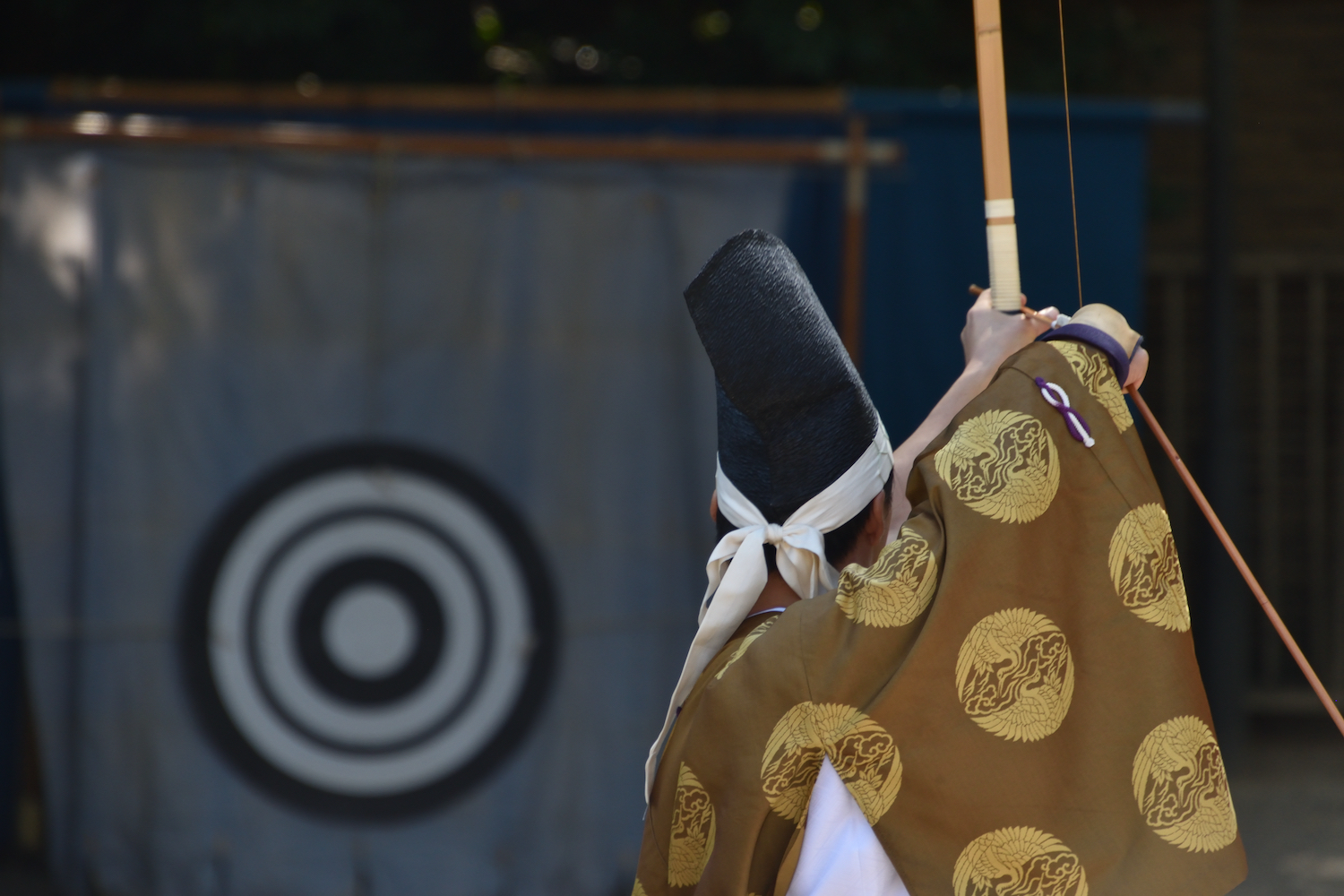
After World War II, the practice of kyudo along with other martial arts was banned by the occupation forces.
It wasn’t until 1949 that final authorization was granted and the Zen Nihon Kyudo Renmei (the All Nippon Kyudo Federation) was formed in 1953.
Kyudo became an art of training for spirit and mind, more like fostering one’s discipline for self-control.
Differences between Kyudo and Western Archery
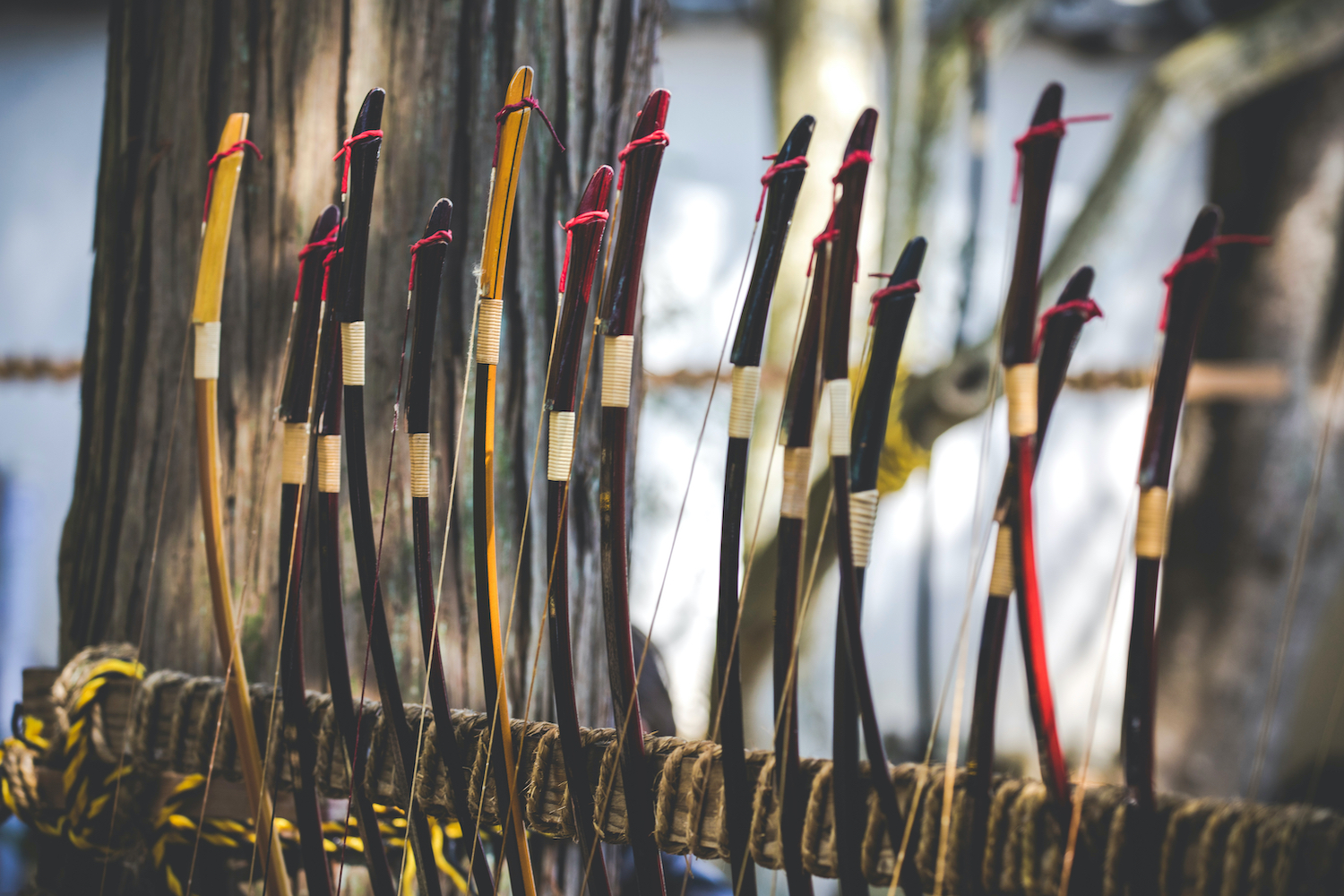
Japanese bows are unparalleled compared in length to other archery bows.
Western archery may be practical as its bows are shorter and designed to shoot longer with the strength while Japanese bows possess beauty and artistry in its distinguishing features.
As it comprises a large sphere in the world of the spirit and mind, it was also used in religious rituals.
Basically, both of the practice aims to hit a stationary target.
In the competition of archery, how many targets you hit and its preciseness is what matters, but in Kyudo the process of shooting is important as equally as the hitting target, or even more so.
The Spirit of Kyudo
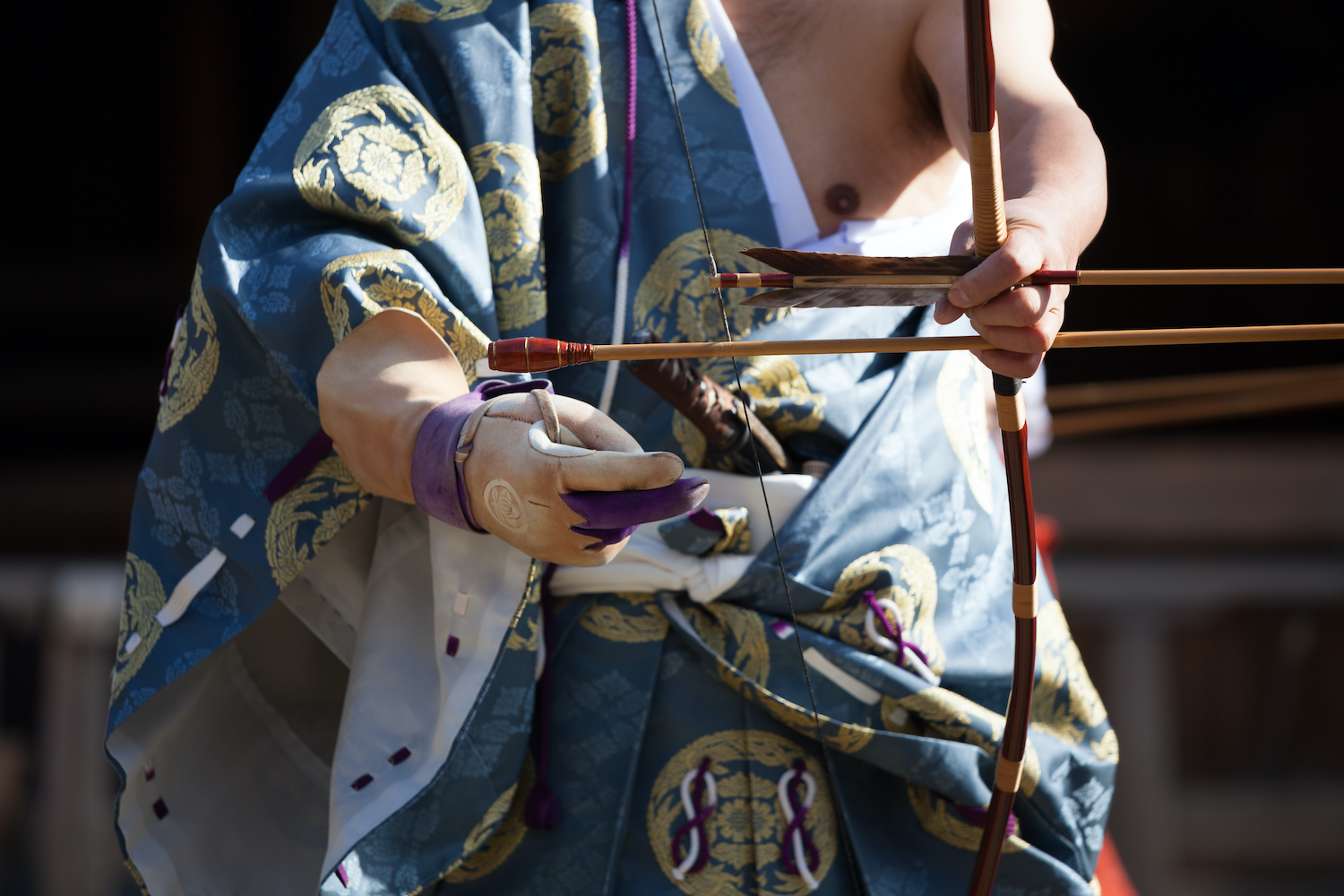
The spirit of Kyudo can be visible most at the ceremonial shooting.
You aim, release the arrow, and it might hit the target or miss it.
How many points you hit is something secondary in Japanese archery. You take a time to reflect on what you might have done wrong or might have done right after you shot.
This reflection is a large part of the discipline and also the reason why it is so deeply appreciated by many as a way of meditation.
A good shooting comes from good posture.
One has to stand with one’s back straight, pull one’s shoulders back to keep perfect balance and focus one’s energy on the lower abdomen.
Also, a sigh of a good archer is that their concentration is great that an aura of calmness and serenity seems to envelop them.
Rei (Etiquette) – Kyudo
In Kyudo, it is believed that etiquette without technique cannot truly be called shooting, while technique without etiquette was not the path of it.
Both technique and etiquette provide an inseparable unity to the shooting that is the truth of Kyudo.
Shooting technique and etiquette should become as one.
Truth, Goodness, and Beauty – Kyudo
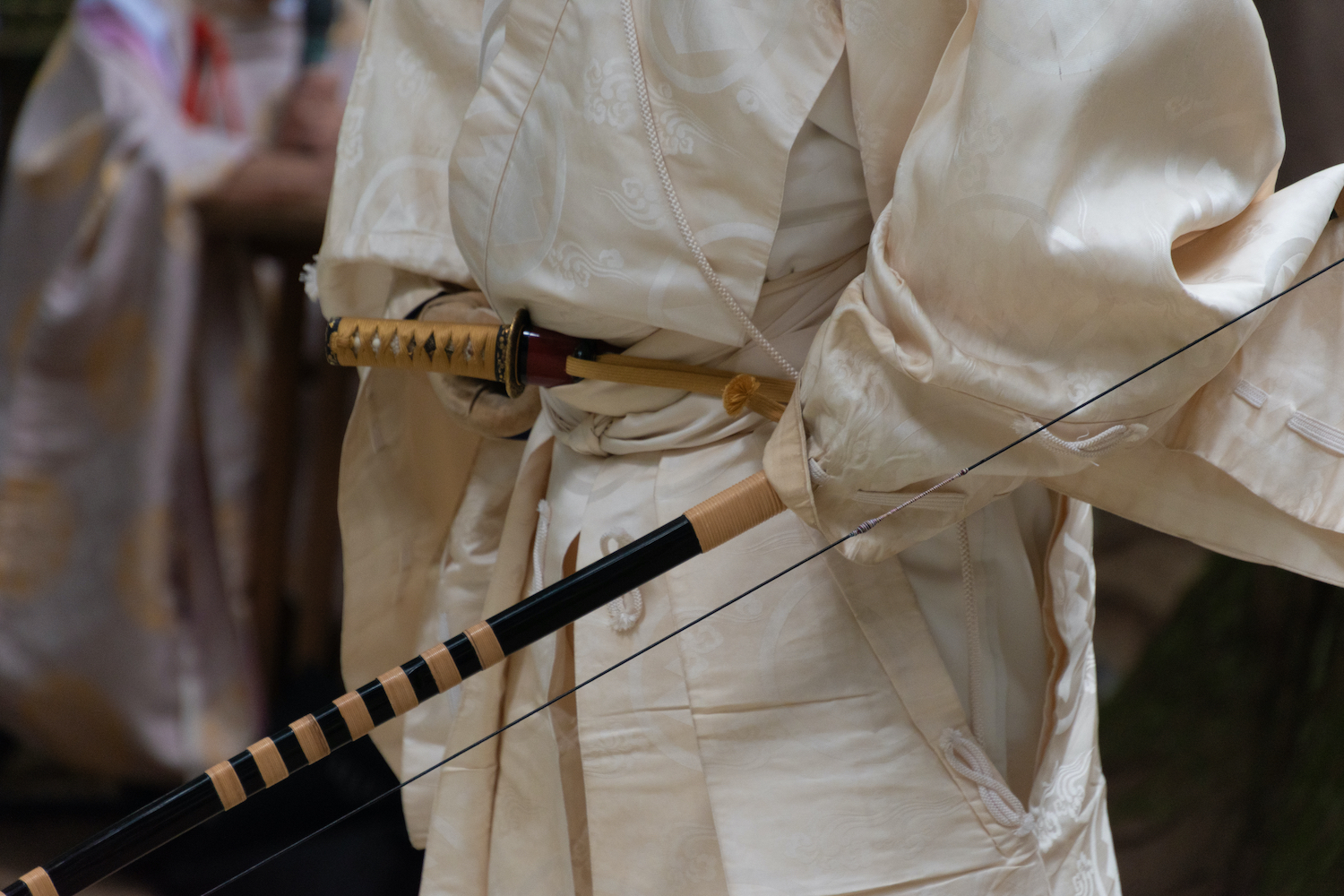
In Kyudo, truth and goodness appeared only after practicing etiquette.
The truth (Shin) of the bow is measured by its sae (serenity), tsurune (sound of the string during release) and tekichu (hitting the target).
The way of the bow is a process of seeking Shin by improving these skills, one shot at a time.
The goodness (Zen) is the manifestation of the ethical aspect of it.
The crucial idea of it is to associate, bond and be at peace with others while maintaining serenity at all times. This discipline is the basis of Kyudo.
The beauty (Bi) comes from not only from its exquisitely beautiful shape of the bow, but what really stimulates beauty is the dignity.
In Kyudo, knowing and actually practicing the truth and the goodness is what considered to be ‘beautiful’.
In all the process, the rhythmical movement created by a calm state of mind expresses dignity, which becomes graceful in Kyudo.
This aspect is original to the Japanese way of the bow.
Equipment – Kyudo
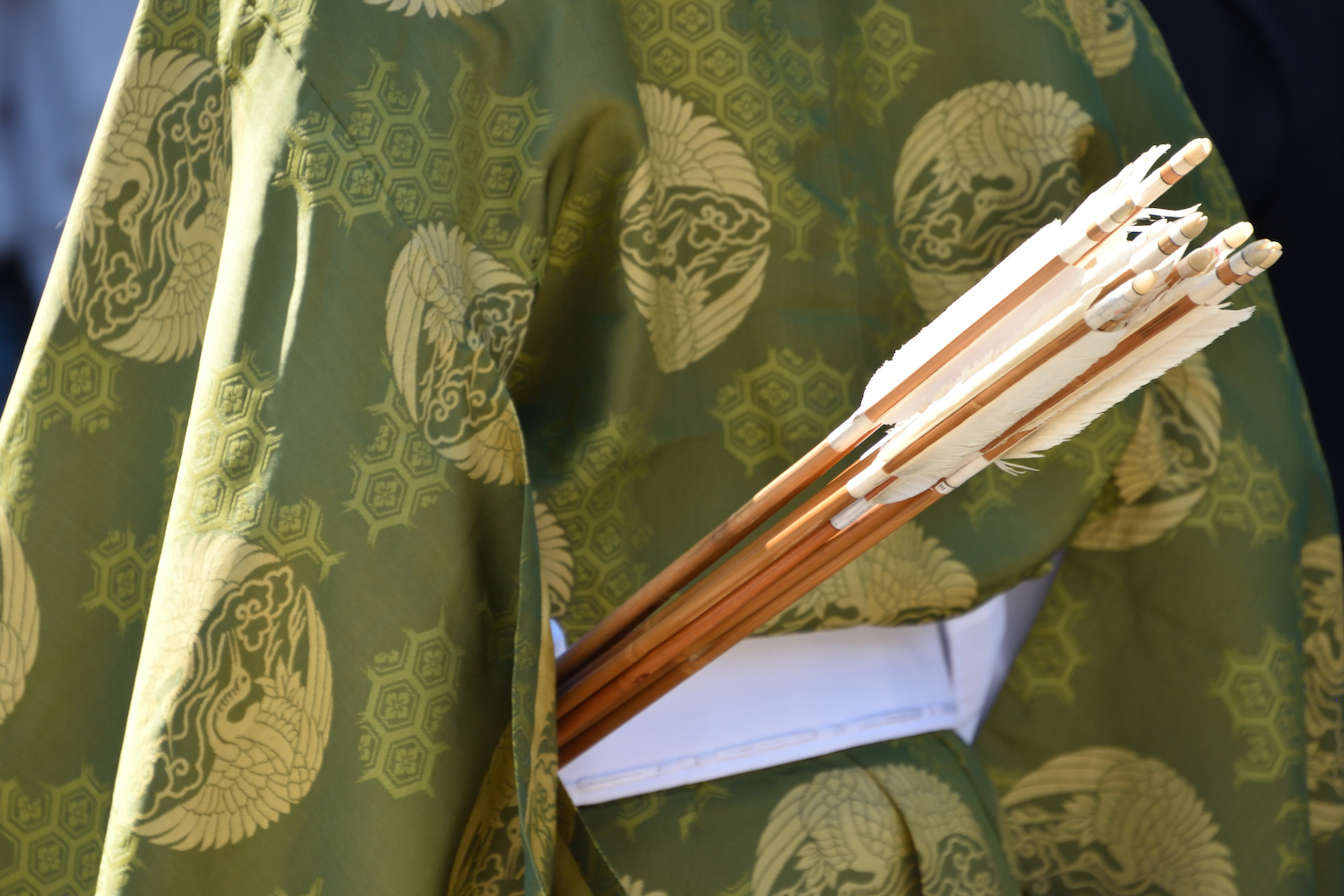
Ritualistic use of the bow and arrows have been a part of Shintoism for over 2000 years.
Much of the Kyudo ceremony, the attire is worn by the archers, and the ritual respect shown in the equipment and shooting place is derived from the ancient Shinto practice, also influenced by Zen Buddhism.
Shinto Beliefs: Purity, Sincerity, and Harmony
Japanese Buddhism #2: End of the World Belief, Pure Land, and Zen
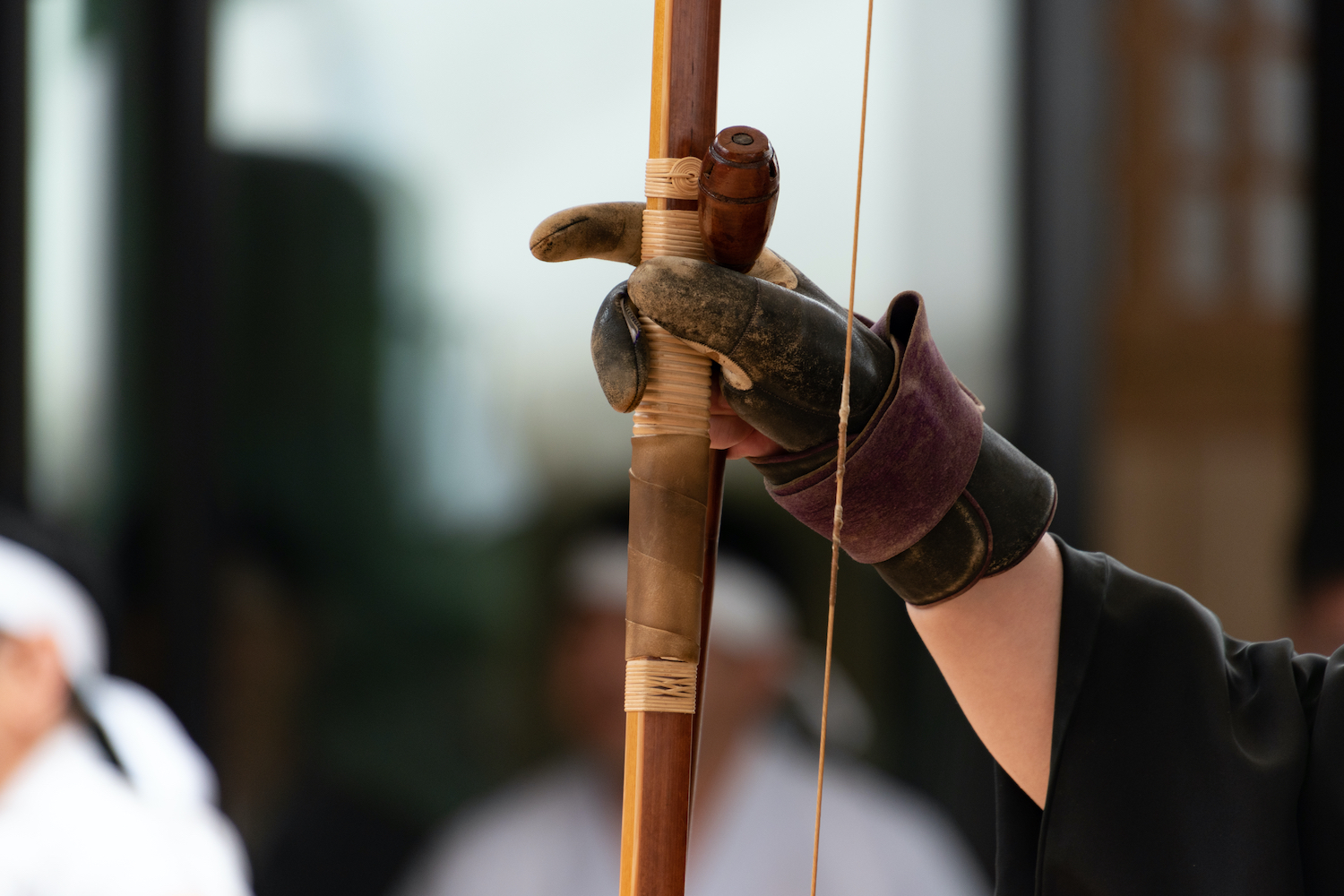
Once you step in Kyudojo (Japanese Archery practice range), you might feel something sacred with a spiritual atmosphere with archers incorporating with a sense of meditation into every movement and shot.
Strict self-control and emotional stability are what’s crucial to one’s spirit and to the practice of it.
Practicing it develops your creativity, too, as both spirit and creativity born out of simplicity.
The intuitive process begins only when the rational mind is quieted.
Kyudo, “the Way of the Bow”, unites body and mind, which tend to separate in this modern day.
If you have a chance to practice one, enjoy the unity between your body and mind in the serene setting of Kyudojo.
Reference
弓道の歴史ー概要ー1.弓道の始まりから戦時中まで (blog.goo.ne.jp)
Related Articles
Kendo: “The Way of the Sword” with Courtesy and Respect
Japanese Patterns: Traditional Motifs and Designs


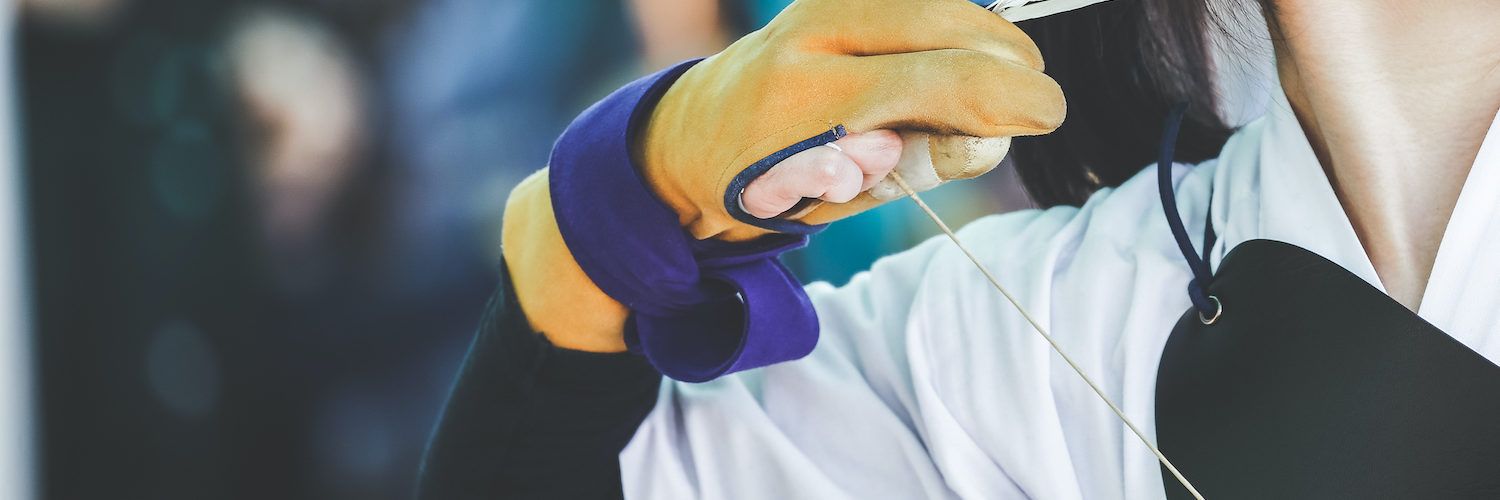
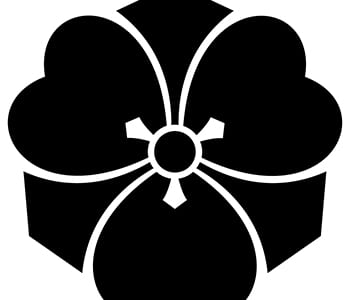
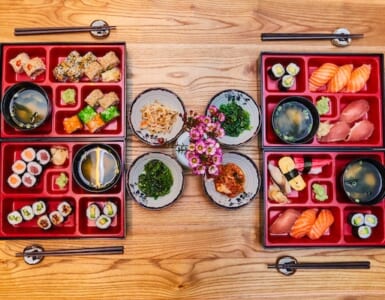
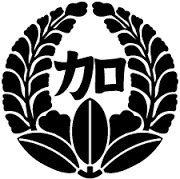


Add comment